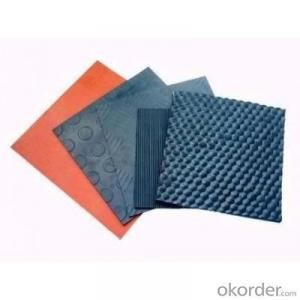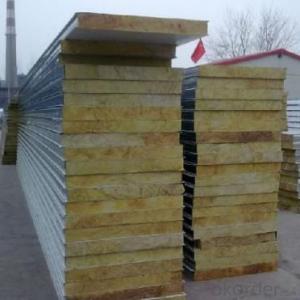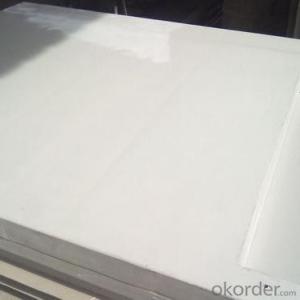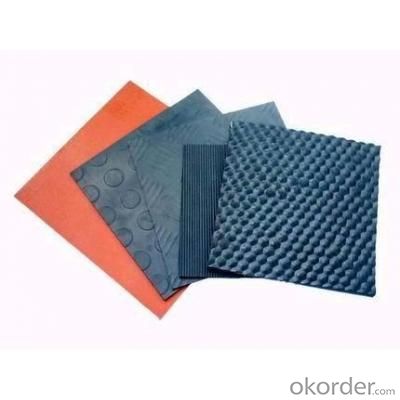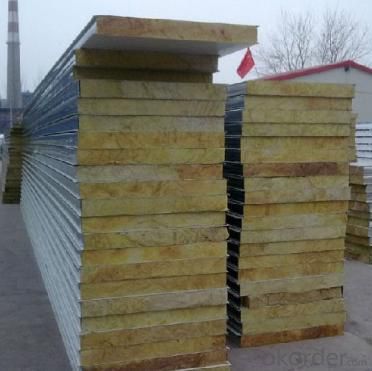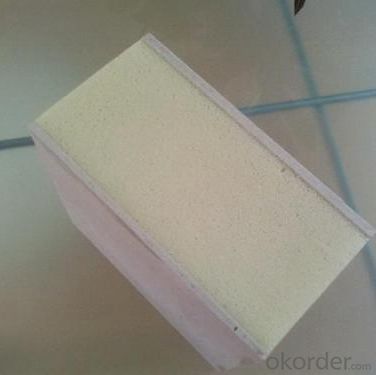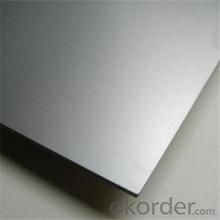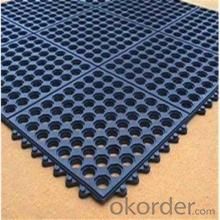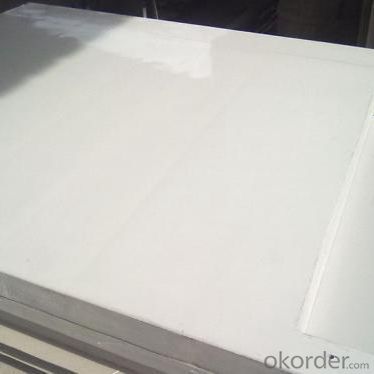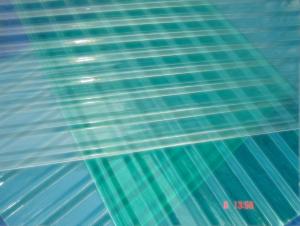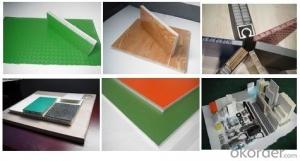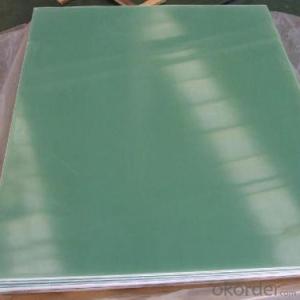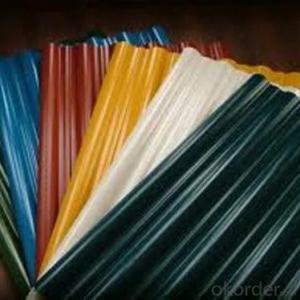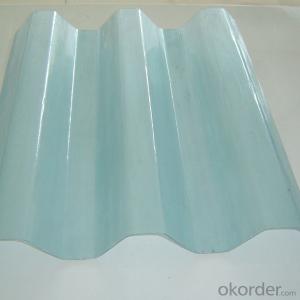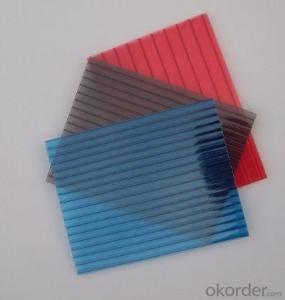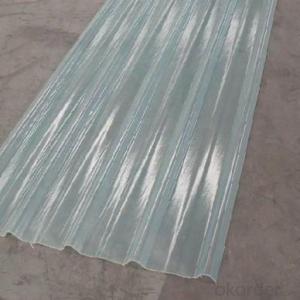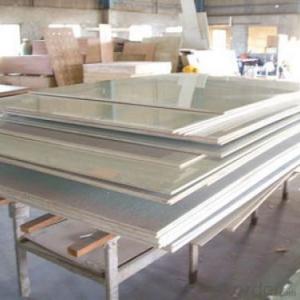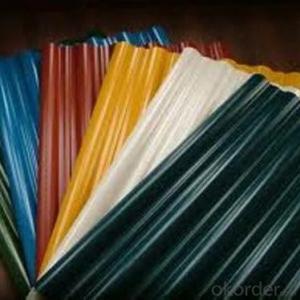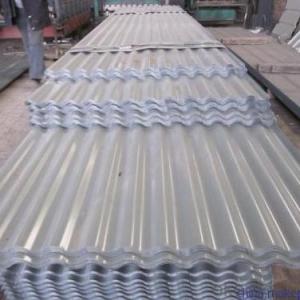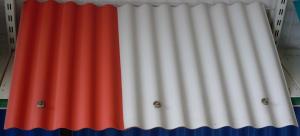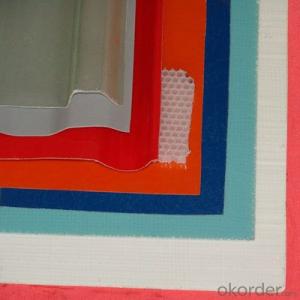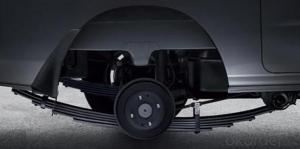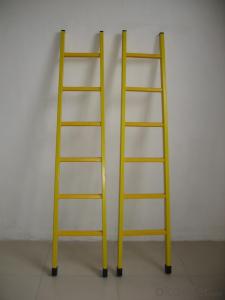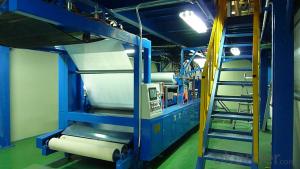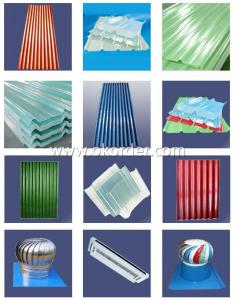FRP Roofing Panel - Transparent Plastic Roof/FRP Roof Sheet
- Loading Port:
- Tianjin
- Payment Terms:
- TT OR LC
- Min Order Qty:
- 300 m
- Supply Capability:
- 50000 m/month
OKorder Service Pledge
OKorder Financial Service
You Might Also Like
Specification
PRODUCT DESCRIPTION
Equipment is FRP continuous molding machine, unit mix of resin, fiber Wall to Wall thickness control, process regulation, curing, cutting, cleaning consisting of several parts. The production capacity can reach 2,500 meters. The accuracy of the equipment reached the advanced level, while the advanced production technology to ensure product quality and stability.
FRP flooring panel is a big size profile which is made by pultrusion technology and in holistic shape, it could
form a continuours close plane by unique self-lock structure,which could be used as load structures in various
corrosion environments and could replace wood plate, aluminum plate or steel plate etc.
FEATURES
1.Light transmission rate of 80%
2.Anti-aging
3.good corrosion resistance
4.excellent toughness
5.used in -60°c to 100 °c
6.Thickness:0.8-2.5mm
7.length:Customized
8.Excellent water resistance
9.Impact resistance
SPECIFICATIONS
| Name: | Fibreglass Reinforced Polyester(FRP ) Sheet |
| Material: | Protective film, Unsaturated resin polyester, Fiberglass |
| Weight: | 1800g/2400g/2750g/3050g Square meter |
| Thickness: | 0.8~3.0mm |
| Length: | Customized |
| Temp: | used in -40°c to 140 °c |
| OEM: | Welcomed |
| Color: | Clear/Blue |
PICTURES
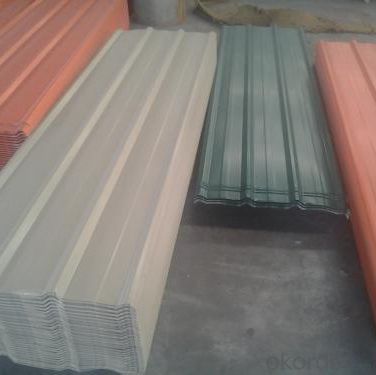
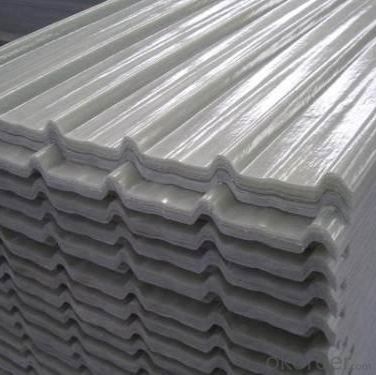
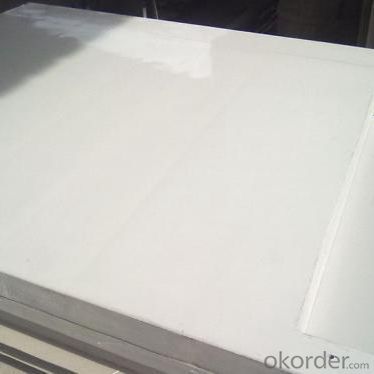
- Q: Are FRP roofing panels resistant to warping or deformation from heavy loads?
- Yes, FRP (fiberglass reinforced plastic) roofing panels are highly resistant to warping or deformation from heavy loads. The strong and durable nature of FRP panels allows them to withstand heavy loads without compromising their structural integrity, making them an excellent choice for applications that require load-bearing capabilities.
- Q: Are FRP roofing panels suitable for flat roofs?
- Yes, FRP (Fiberglass Reinforced Plastic) roofing panels are suitable for flat roofs. FRP panels are lightweight, durable, and have excellent resistance to UV rays, weathering, and corrosion. These panels also have a high strength-to-weight ratio, making them ideal for flat roofs where weight can be a concern. Additionally, FRP panels offer good thermal insulation properties, helping to regulate temperature and reduce energy consumption. They are also easy to install and maintain, making them a cost-effective choice for flat roof applications.
- Q: Can FRP roofing panels be used for libraries?
- Libraries can indeed utilize FRP (Fiberglass Reinforced Plastic) roofing panels. These panels are a versatile roofing material that offer a multitude of advantages for various applications, including libraries. To begin with, FRP panels are lightweight yet highly durable, making them an ideal choice for roofing projects. They possess resistance against corrosion, UV rays, and extreme weather conditions, ensuring long-lasting protection for library buildings. This durability also reduces the need for frequent maintenance and replacement, resulting in cost savings in the long term. Furthermore, FRP panels come in a wide range of designs, colors, and finishes, giving libraries the option to select a roofing style that complements the overall aesthetics of their buildings. This ensures that libraries maintain their architectural appeal while benefiting from the practicality offered by FRP roofing panels. Additionally, FRP panels provide excellent insulation properties, aiding in temperature regulation and reducing energy consumption within libraries. This contributes to a more comfortable and energy-efficient environment, ultimately enhancing the overall experience for library visitors. Moreover, FRP panels are easy to install and can be customized to meet specific design requirements, enabling libraries to create unique roofing solutions. These panels can be easily cut, shaped, and installed, streamlining the installation process and minimizing complications. To conclude, FRP roofing panels are a suitable option for libraries due to their durability, design flexibility, insulation properties, and ease of installation. Utilizing FRP panels for library roofs ensures long-lasting protection, enhances architectural aesthetics, promotes energy efficiency, and guarantees a comfortable environment for library-goers.
- Q: Are FRP roofing panels suitable for ice and snow regions?
- FRP (Fiberglass Reinforced Plastic) roofing panels have certain qualities that make them suitable for ice and snow regions, but there are also some considerations to keep in mind. One of the main advantages of FRP roofing panels in cold climates is their durability. They are highly resistant to impact, cracking, and splitting, which is crucial when dealing with heavy snowfall and ice buildup. FRP panels do not absorb moisture, so they do not become brittle or warp when exposed to freezing temperatures. Additionally, they have a high resistance to corrosion and do not rot or rust, making them ideal for regions with harsh winter weather. Another factor to consider is the thermal conductivity of FRP roofing panels. They have a low thermal conductivity, meaning they do not transfer heat easily. This can be beneficial in ice and snow regions, as it helps to prevent the formation of ice dams on the roof. Ice dams occur when heat from the interior of the building escapes through the roof, causing the snow to melt and refreeze at the roof edges. FRP panels can help to maintain a more consistent temperature on the roof surface, minimizing the risk of ice dams. However, it is important to note that FRP roofing panels are not entirely immune to ice and snow-related issues. Like any other roofing material, they can still accumulate snow and ice, which may need to be cleared periodically to prevent excessive weight on the roof. Additionally, proper installation and insulation are crucial to ensure the panels perform optimally in cold climates. Adequate ventilation and insulation in the attic space can help to prevent the formation of ice dams and reduce heat loss. Overall, FRP roofing panels can be a suitable choice for ice and snow regions due to their durability, resistance to moisture and corrosion, as well as their low thermal conductivity. However, it is essential to consult with a professional and ensure proper installation and maintenance to maximize their effectiveness in these specific climatic conditions.
- Q: Can FRP roofing panels be used in historical preservation projects?
- Historical preservation projects can utilize FRP (Fiberglass Reinforced Plastic) roofing panels. FRP roofing panels serve as a versatile and durable roofing material that offers numerous benefits in these projects. To begin with, FRP roofing panels have the capability to mimic the appearance of traditional roofing materials like clay tiles or wood shakes. This allows historical buildings to retain their original aesthetic while taking advantage of the enhanced durability and longevity provided by FRP panels. Moreover, FRP roofing panels are lightweight and easy to install, making them suitable for historical buildings with delicate structures. They exert less pressure on the structure compared to heavier roofing materials, thereby reducing the risk of damage or structural issues. Additionally, FRP roofing panels exhibit high resistance to corrosion, moisture, and UV radiation. This resistance ensures that the roof of the historical building remains protected and extends its lifespan, thereby decreasing the need for frequent repairs or replacements. Furthermore, FRP panels possess excellent insulation properties, resulting in energy efficiency benefits for historical buildings. This insulation helps regulate temperature, thereby reducing heating and cooling costs and enhancing the overall sustainability of the building. Lastly, FRP roofing panels are low maintenance and have a long service life. This attribute is crucial in historical preservation projects as it minimizes the need for ongoing maintenance and facilitates the preservation of the building's historical integrity. In conclusion, FRP roofing panels represent a suitable and advantageous choice for historical preservation projects. Their ability to replicate traditional roofing materials, lightweight nature, durability, resistance to various elements, insulation properties, and low maintenance make them a viable option for preserving historical buildings while ensuring their long-term protection and sustainability.
- Q: Are FRP roofing panels resistant to warping due to heat?
- Yes, FRP roofing panels are highly resistant to warping due to heat. The unique composition of fiberglass reinforced plastic (FRP) makes these panels highly durable and stable, allowing them to withstand high temperatures without warping.
- Q: How do FRP roofing panels perform in high humidity areas?
- FRP (Fiberglass Reinforced Plastic) roofing panels are known for their durability and resistance to various environmental factors. In high humidity areas, these panels perform exceptionally well due to their unique composition. The fiberglass material used in FRP roofing panels is inherently resistant to moisture, making them an ideal choice for humid environments. Unlike other roofing materials, such as wood or metal, FRP panels do not absorb moisture, preventing the growth of mold, mildew, and rot that can commonly occur in high humidity areas. Furthermore, FRP panels have a high strength-to-weight ratio, allowing them to withstand the expansion and contraction that can happen in humid conditions without warping or distorting. This stability ensures that the panels remain structurally sound and maintain their performance over time. Additionally, FRP panels are often treated with a UV-resistant gel coat, which provides an extra layer of protection against the harsh effects of sunlight. This coating helps prevent discoloration, chalking, and degradation that can be accelerated in high humidity areas. It is important to note that proper installation and maintenance are crucial for the long-term performance of FRP roofing panels in high humidity areas. Adequate ventilation and regular cleaning to remove any debris or organic matter are recommended to ensure optimal performance and prevent any potential issues. Overall, FRP roofing panels are a reliable and durable choice for high humidity areas. Their moisture resistance, stability, and UV protection make them an excellent option for maintaining the integrity and longevity of roofs in such environments.
- Q: Can FRP roofing panels be used for outdoor arenas or stadiums?
- Yes, FRP (Fiberglass Reinforced Plastic) roofing panels can be used for outdoor arenas or stadiums. FRP panels are known for their durability, strength, and resistance to weather elements, making them suitable for outdoor applications. Additionally, FRP panels are lightweight, easy to install, and offer excellent UV resistance, making them a popular choice for roofing solutions in outdoor venues.
- Q: Can FRP roofing panels be installed over purlins or directly on the roof deck?
- Yes, FRP roofing panels can be installed over purlins or directly on the roof deck. However, it is important to follow the manufacturer's guidelines and recommendations for proper installation and ensure that the purlins or roof deck provide adequate support for the panels.
- Q: Can FRP roofing panels be used in areas with high winds?
- Indeed, FRP roofing panels can be utilized in regions characterized by strong winds. Recognized for their robustness and endurance, FRP panels have been specifically engineered to endure diverse weather conditions, encompassing high winds. Nonetheless, it is crucial to guarantee that the panels are installed and affixed to the structure in a meticulous manner, to ensure optimal resistance against wind uplift. Furthermore, employing suitable fasteners and adhering to the installation guidelines provided by the manufacturer will augment the panels' capacity to withstand high winds.
Send your message to us
FRP Roofing Panel - Transparent Plastic Roof/FRP Roof Sheet
- Loading Port:
- Tianjin
- Payment Terms:
- TT OR LC
- Min Order Qty:
- 300 m
- Supply Capability:
- 50000 m/month
OKorder Service Pledge
OKorder Financial Service
Similar products
Hot products
Hot Searches
Related keywords
